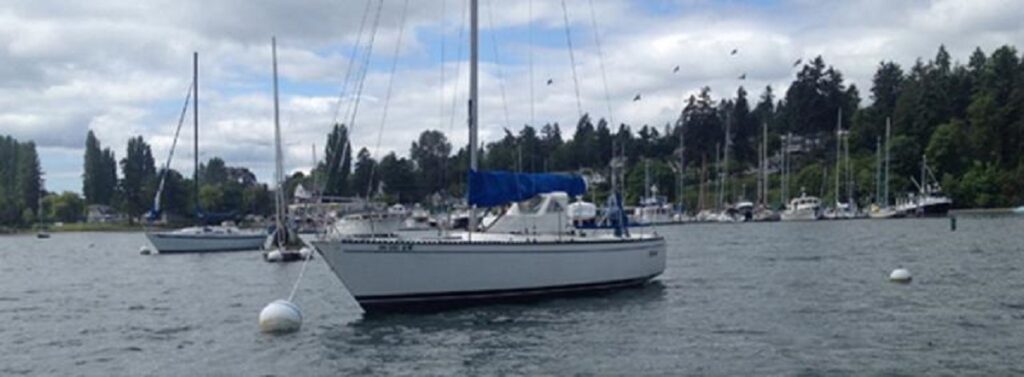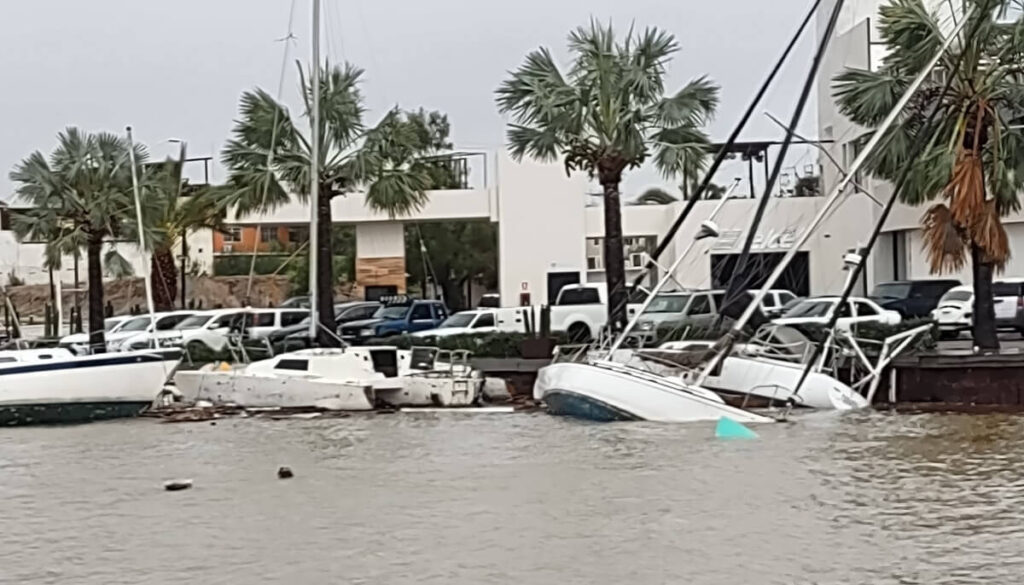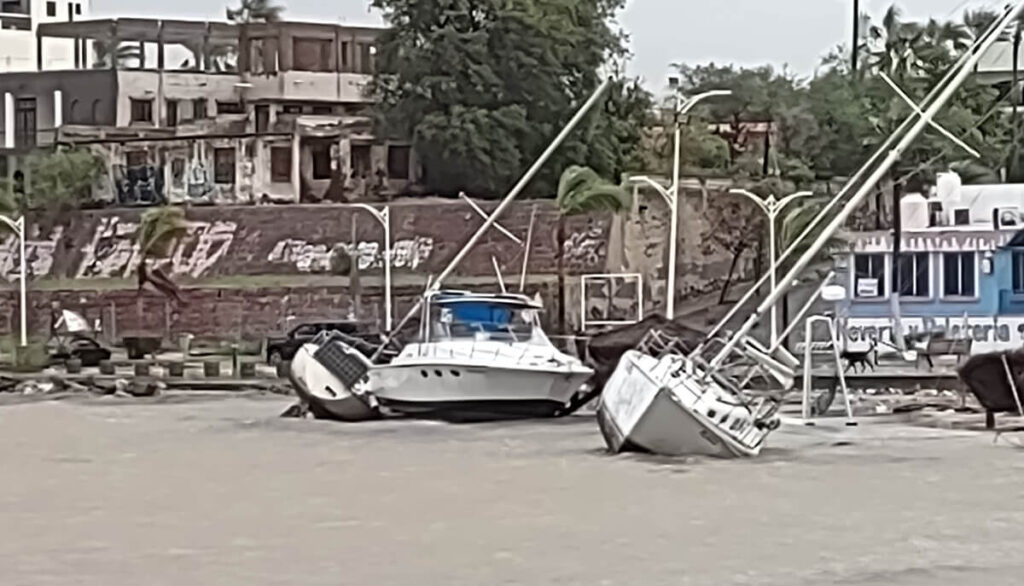Hello.
I am Captain Brian, owner of this 37 ft Hunter. S/V Kwaai has weathered several major hurricanes on that mooring in the past 10 years.
S/V Kwaai lies on a 1100 lb mooring in the bay of LaPaz, Baja California Sur.

Having seen the devastation in the marinas from hurricane Norma, personally I would rather have any boat of mine ride the storm out on a mooring.
With the high cost of keeping your boat in a marina, now in 2023 that starts at around $1200 per month USD, a mooring is defiantly something to consider.
There is some legality to consider as well, as moorings in the bay seem to be frowned upon by the La Paz governing body. That being said there are several boats secured by moorings. Several others are secured by conventional anchors.
Having just gone through the October 2023 hurricane, Norma, the La Paz fleet has lost in my estimate around 100 boats, a combination of sail, power and fishing boats. Most of these are total losses and have ended up sunk or washed up on rocks and beaches. The storm damage is hard enough to deal with but to add insult to injury, these boats are then looted by locals for anything of value.


Looking at a boat on anchor in normal conditions as we would all anchor up when cruising. The action of the swell / waves allows the boat to ride the swells. This movement is generally absorbed by the chain portion that lies on the ocean floor. So you may have all chain or a combination of rode (rope) and chain.
As the swell lifts the bow of the boat, the chain is lifted off the ocean floor, the boat is pushed backwards by the swell, and the boat then settles back down, moves forward and the chain lies back down on the ocean floor. This is our normal every day dance as the swell / waves pass under our boats.
This however is not what we see in a severe storm. In 2014 hurricane Odile produced winds of 125 miles per hour, in 2006 hurricane John – 110 miles per hour. The excessive force of the wind pushes the boat as far back as it will go. So now there is no shock absorbing effect from the raising and lowering of the anchor chain. The anchor chain is completely taught under the force of the wind. So now when the wave hits into the boat and attempts to push the bow of the boat up, there is no slack in the chain to absorb that movement. The full force of that is carried directly by the anchor and the equal force by the fitting on the boat that the chain is attached to. This is vitally important in understanding why so many boats are lost in these storms. If you are attaching your anchor rope to a cleat on your deck that is secured with two bolts through your fiberglass deck – you need to upgrade that and redesign that part of your boat.
During hurricane Odile S/V Kwaai was getting through the storm quite well on her own. Unfortunately another larger heavier boat, S/V Rockbottom had broken free and slammed into the side of S/V Kwaai. The combined force on the mooring post supplied standard by Hunter Yachts was ripped right off and S/V Kwaai was set adrift, to later be washed out on a beach. Now in hurricane Norma I have seen several boats in marinas that have sunk after being hit by boats that dragged their anchors and ended up crashing into the boats in the marina. There is no way of knowing how many of the boats lost would have made it through the hurricane if they had not been hit by a drifting boat. So I can build you the perfect mooring to keep your boat exactly where you left it, but you have to upgrade your boat as well.
So understanding the forces exerted on the attaching cleat / post that you attach to on your bow, lets look at what happens to the anchor. Or bay here in La Paz is a sand bottom, so by design an anchor does not penetrate very deep into the sand. Possible a foot or lets be generous and say a foot and a half. Now under normal circumstances the angle of pull on the anchor is mostly parallel to the bottom of the ocean floor and when anchoring at an island location when cruising you would let out a lot of chain / rode to give yourself the best angle at the anchor and as much shock absorption as possible. Well in the bay of La Paz you will not be able to, there just is not enough space and too many boats. So the net result is that during the storm your anchor chain is acting on your anchor at an angle between the anchor and the bow of your boat. Essentially you are now pulling the anchor up and not along the bottom. Now take into consideration that there is no slack, no shock absorption, and its easy to see why during a hurricane the anchor of anchors will not hold your boat.
A mooring is the way to go. Enough weight on the ocean floor will just not move. Add to that chain and hardware strong enough and you are good to go.